The Willy Victor Era on Midway Island was a significant period during the Cold War, characterized by advanced airborne early warning radar operations. This era was marked by the United States and Canada establishing the Distant Early Warning (DEW) Line across northern Canada to southern Alaska in the mid-1950s as a defensive measure against the Soviet Union. To extend this line, the U.S. Navy deployed overwater radar-equipped aircraft, such as the Lockheed Super Constellation, modified to carry search and height finder radars. These aircraft, designated WV-2 (Willy Victor), were capable of remaining airborne for over 20 hours, thanks to added tip tanks on the wings.
Midway Island, a naval facility since World War II, underwent significant development to support these operations. In 1957, over $40 million was spent constructing an 8,000-foot runway, a large aircraft hangar, and other necessary facilities on Sand Island within the atoll. The first Pacific Barrier flight from Midway occurred on July 1, 1958, with five aircraft maintaining continuous radar surveillance at all times, taking turns departing and landing every three hours.
In 1960, the three Pacific Barrier squadrons were consolidated into the Airborne Early Warning Barrier Squadron Pacific (AEWBARRONPAC), the largest single aviation squadron in naval history. This consolidation brought about a highly organized operation, where all detected contacts had to be tracked, plotted, and reported immediately. The command was responsible for managing the aviation squadron and a surface squadron of six to eight radar picket ships.
The crews, comprising aviators, engineers, navigators, radiomen, and technicians, were deployed to Midway for 18 days at a time, conducting barrier flights every 48 hours. By December 1960, the squadron operated 32 WV-2s and 5 R7Vs for transporting personnel and mail to and from Midway.
This era came to an end in 1965, with the advent of over-the-horizon ground-based radars capable of covering the north Pacific and Atlantic. The Willy Victor Era on Midway Island represents a crucial phase in Cold War history, demonstrating the strategic importance of Midway and the technological advancements in naval aviation and radar surveillance.
1957 – A $40 million construction program begins as Midway becomes a home for the Pacific Airborne Early Warning portion of the Distant Early Warning Line (DEW), known as the Pacific Barrier or DEW Line. Navy construction units (Seabees) complete an 8,000-foot runway for the heavy aircraft landing on Midway and build an aircraft hangar large enough to hold six aircraft. During this construction, the Hawaiian Dredging Company completes new housing, reconditions the station theater, and builds a new chapel in a modern “A” frame design. Construction work employed over a thousand men. The channel between Eastern and Sand Islands was deepened to allow the largest US tankers to enter.
July 1958 – The first flight from Midway, of the Airborne Early Warning Carrier, was made this month. Midway became the refueling and jumping off point for squadrons of 3,000-mile-long round-the-clock patrols of Super Constellation Lockheed EC-121 Warning Star airplanes. Their objective was to extend early warning coverage from land-based antenna arrays and radar picket ships to detect surprise Soviet bomber and missile attacks. The flights continued through 1965. Warning Stars were nicknamed “Willie Victors” by naval aircrews, based on a slang version of the phonetic alphabet and the naval version of the aircraft’s pre-1962 designation of WV-1, WV-2 or WV-3.
January 22, 1961 – A WV-2 (Willy Victor) aircraft was returning to Midway Island, after completing a Distant Early Warning (DEW) Mission. In the final stage of touching down at Midway, the aircraft came into contact with a small pile of coral on the approach end of the runway. After a hard landing, the aircraft veered to one side of the runway. It then hit a crash truck that was routinely parked to the side of the runway in the event of an emergency and broke apart. A fire then started, killing six crewmen aboard the aircraft and three Navy men on the crash truck.
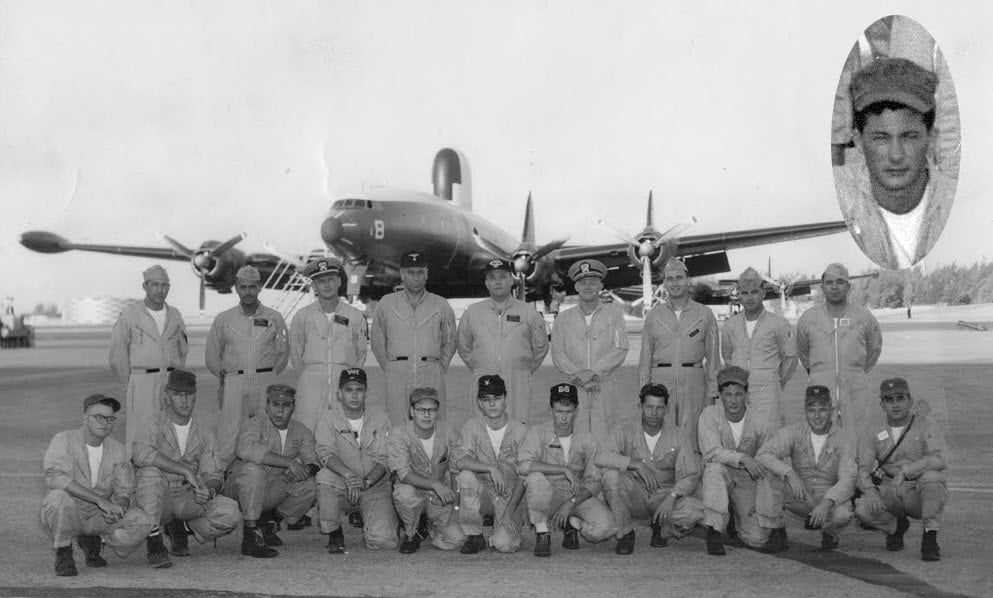
Photo of Last Barrier Flight Crew, in 1965
L1049 Super Constellation
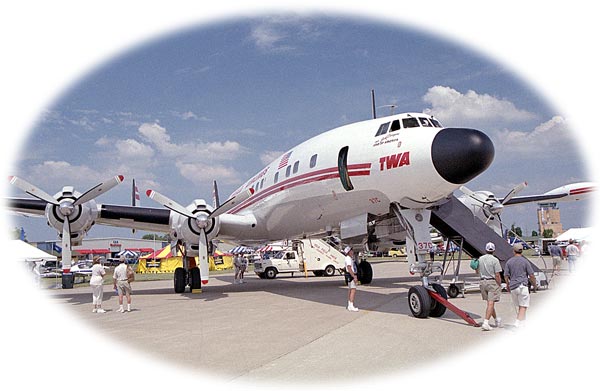
A total of 579 Super Constellations were built between 1951 and 1958 with 259 going to commercial operators and 320 to the US military. The US Navy was the largest operator of Super Constellations with a total of 204 transport and early warning radar aircraft. As early as 1949, Lockheed considered stretching the Constellation eighteen feet by inserting constant diameter fuselage plugs forward and aft of the wing. In order to expedite development, the first Constellation, c/n 1961, was purchased from Howard Hughes in May 1950 for $100,000 and modified as the Super Constellation prototype. Still powered by the Pratt and Whitney R2800 engines installed in 1945, the prototype made its first flight on October 13, 1950. After twenty-two hours of flight testing, R3350 engines were installed and the vertical stabilizers were enlarged by eighteen inches to increase directional stability.
The Super Constellation incorporated over 550 design changes and the first production aircraft flew on July 14, 1951. The type certificate was awarded on November 29, 1951 and the third production aircraft, N6203C, entered service with Eastern Airlines on December 17, 1951. Prior to 1953 all turbo-compound R3350 were earmarked for military use and the L1049 had to settle for 2,700 hp CA1 engines, which made it underpowered.
The Navy’s R7V-1 transport, first flown in November 1952, was the first Super Constellation to utilize the turbo-compound R3350 engine. Turbo-compound engines became available for commercial use in early 1953 and 3,250 hp DA1 engines were first installed on L1049C Super Constellation PH-TFP, which was delivered to KLM on June 10, 1953. Later developments included twin 600-gallon wing tip tanks on civilian L1049G/H’s and military early warning radar Super Constellations resulting in an extended range for these aircraft. The 3,400 hp EA3 and EA6 versions of the R3350 engine were installed on the L1049H cargo versions of the Super Constellation.
The USAF flew the Super Constellation into the late 1970’s with the US Navy retiring its last aircraft, BuN 141292, in June 1982. For all intents and purposes, commercial operation of the Super Constellation ceased in 1993 when the FAA forbid Dominican operators from operating their aircraft in the United States.
SURVIVORS
N105CF c/n 4137—>Disassembled Avra Valley, AZ and transported to Bridgewater, VA March 2016
N4247K c/n 4144—>Stored at Qantas Founders Museum awaiting restoration
53-7885 c/n 4151—>On display National Museum of the USAF, Wright Patterson AFB, Dayton OH as “Columbine III”
54-155 c/n 4174—>On display USAF History and Traditions Museum, Lackland AFB, San Antonio, TX
HB-RSC c/n 4175—>SCFA unable to secure CHF 20 million to make FOCA mandated repairs and organization disbanded April 2019. As of April 2019, fate of aircraft undecided
VH-EAG c/n 4176—>Airworthy with Historical Aircraft Restoration Society (HARS), Sydney, Australia
54-160 c/n 4179—>Nose section stored in owner Antti Hyvärinen’s backyard in Nukari, Finland
N1104W c/n 4196—>On display Udvar-Hazy Center, Dulles International Airport
54-180 c/n 4199—>On display Transport Aircraft Museum, Charleston AFB, Charleston, SC
HI-548CT c/n 4202—>Nose section salvaged to fabricate flight simulator. Located at “Runway 34 Restaurant and Bar” near Zurich Airport
N4257L c/n 4335—>On display at Castle Air Museum
N4257U c/n 4336—>On display Combat Air Museum, Topeka, KS
52-3425 c/n 4343—>On display Peterson Air and Space Museum, Peterson AFB, Colorado Springs, CO
BuN 137890 c/n 4347—>On display at “Connie Park” near the 552 ACW Wing Complex, Tinker AFB, OK
N51006 c/n 4350—>Forward fuselage section acquired by Dynamic Aviation in April 2017 and stored in Bridgewater, VA
N548GF c/n 4363—>On display at the Yanks Air Museum, Chino, CA
53-554 c/n 4369—>On display Pima Air and Space Museum, Tucson, AZ
53-555 c/n 4370—>On display National Museum of the USAF, Wright Patterson AFB, Dayton OH
BuN 141292 c/n 4416—>Forward fuselage section stored at private residence in Stanley, NC
BuN 141297 c/n 4421—>On display Museum of Aviation, Robins AFB, GA
BuN 141309 c/n 4433—>On display Aerospace Museum of California, Sacramento, CA
BuN 141311 c/n 4435—>Awaiting restoration at Yankee Air Museum
BuN 143221 c/n 4495—>On display National Museum of Naval Aviation, Pensacola, FL
F-BRAD c/n 4519—>On display Nantes, France
CF-TGE c/n 4544—>On display Museum of Flight Boeing Field, Seattle, WA
N1005C c/n 4557—>On display AMC Museum, Dover AFB, DE
D-ALIN c/n 4604—>On display Hermeskeil Museum Mosel, Germany
IN315 c/n 4614—>On display Indian Naval Aviation Museum, Hansa Naval Station, Goa, India
F-BHBG c/n 4626—>Derelict Quimper, France
5T-TAK c/n 4640—>Nose section and nose gear on display TAP Museum, Lisbon, Portugal
F-BHML c/n 4671—>On display FJ Strauss International Airport, Munich as D-ALEM
BG583 c/n 4686—>Stored Agra Air Base, India reportedly earmarked for restoration by the Indian Air Force Museum
N6931C c/n 4813—>Cockpit section in private collection in France
HI-542CT c/n 4825—>Stored Aguadilla-Borinquen Airport, Puerto Rico in deteriorating condition
N6937C c/n 4830—>On display at the National Airline History Museum in Kansas City, MO
CF-NAL c/n 4831—>Stored Sao Tome International Airport, Sao Tome
CF-NAM c/n 4832—>Stored Sao Tome International Airport, Sao Tome
N468C c/n 4846—>Fuselage section stored Blue Creek, Belize
CREDITS AND SOURCES
The Lockheed Constellation Series, Peter J. Marson, Air-Britain Publication, 1982, 2007
Piston Engine Airiner Production List, A.B. Eastwood and J. Roach, TAHS, October 2002
Lockheed Constellation, Stewart Wilson, Notebook Publications, 2001
Propliner Aviation Magazine
Your comments regarding this website would be very much appreciated. Please contact me about any errors you see and information you might have about a “Survivor”. Photos of “Survivors” would also be very much appreciated.
Ralph M. Pettersen
Posted with permission of Tom Dokulil
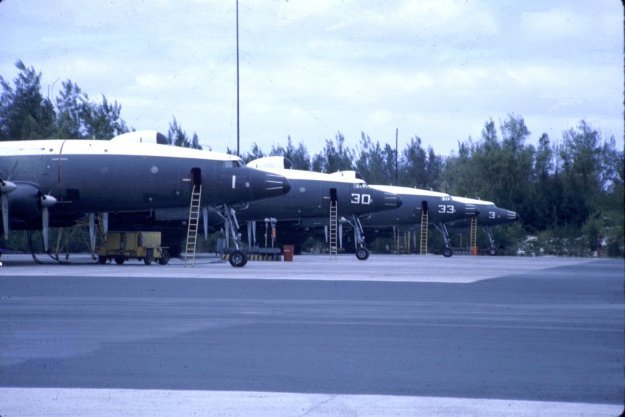
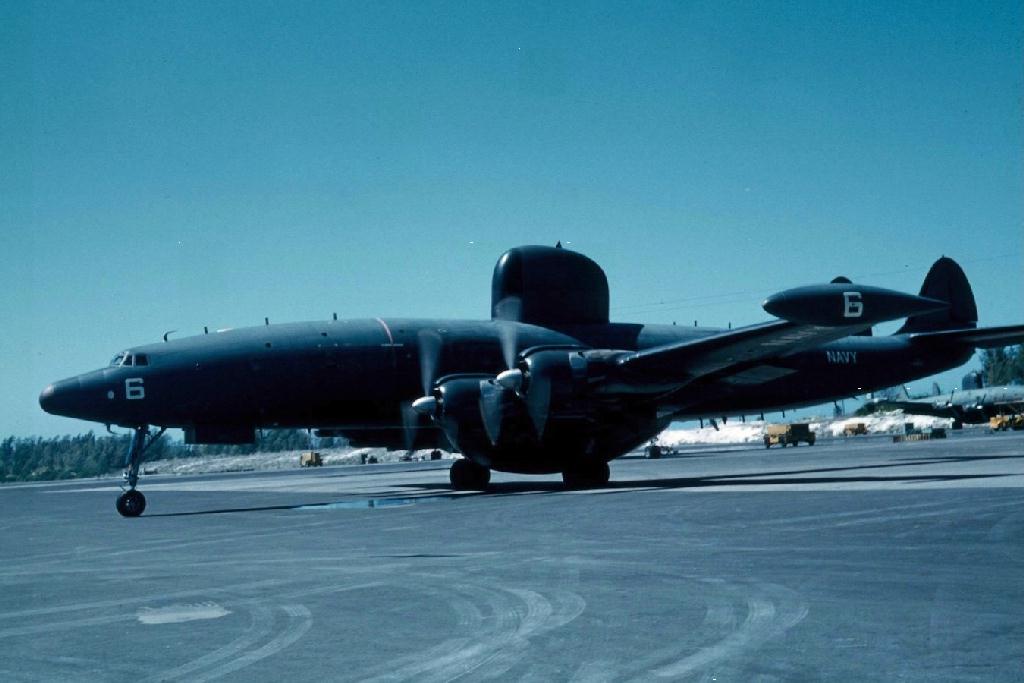
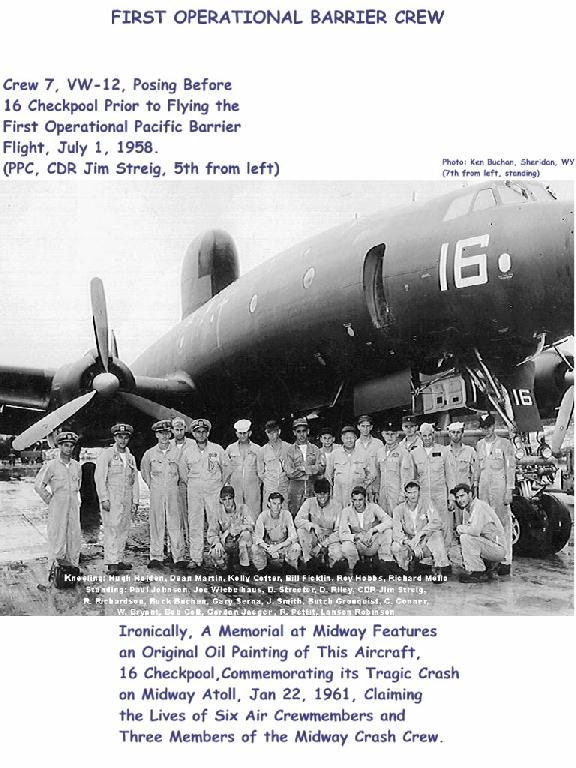
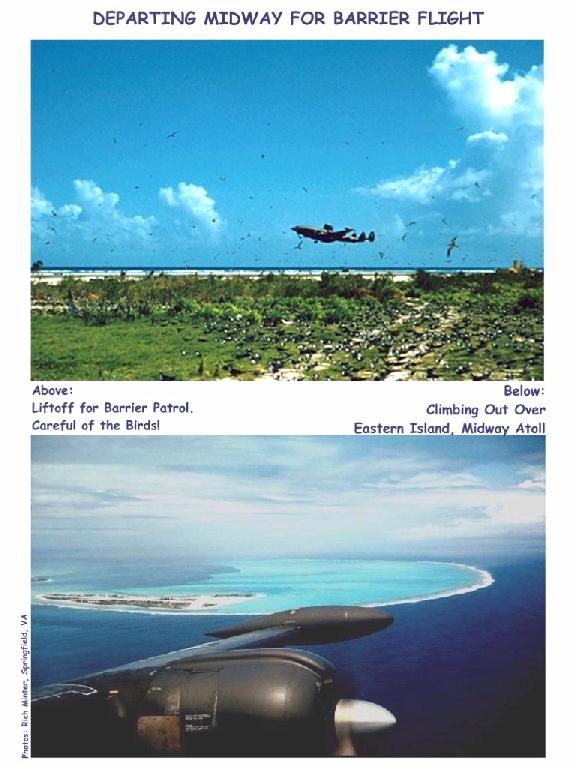
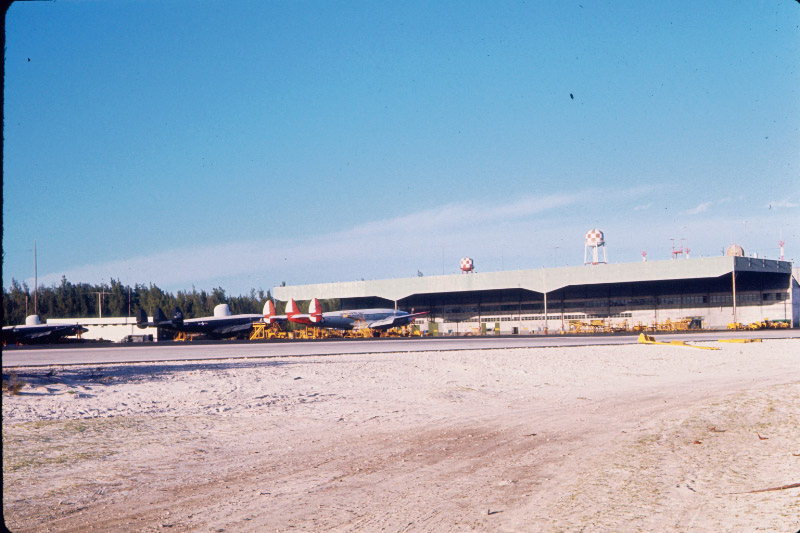
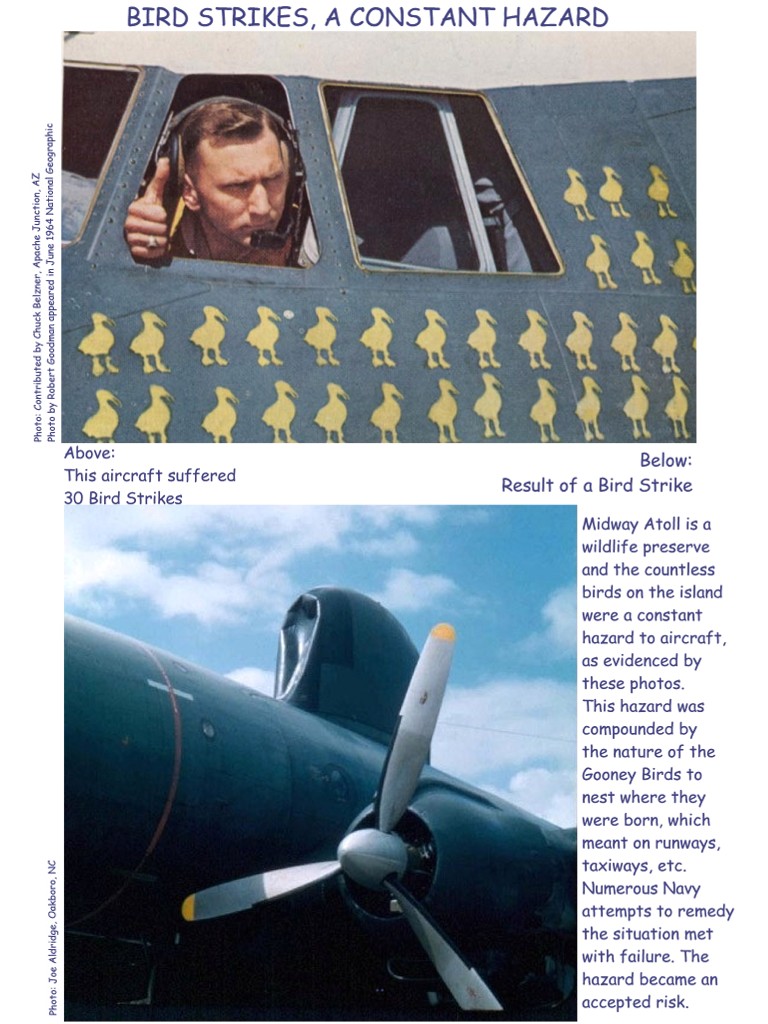
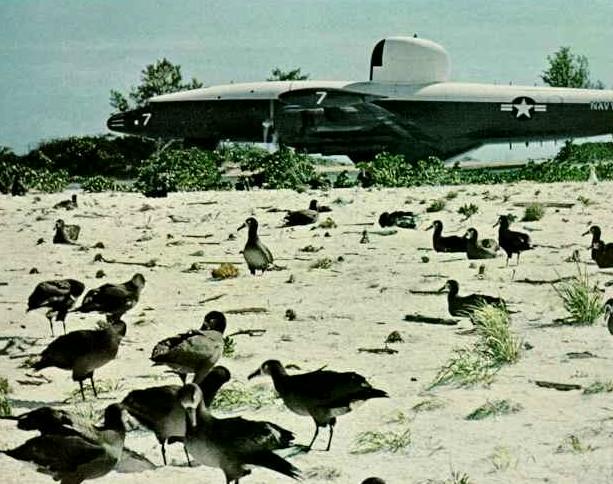

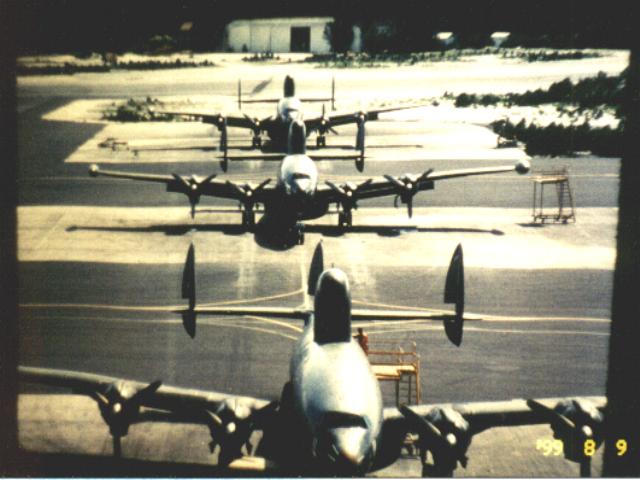
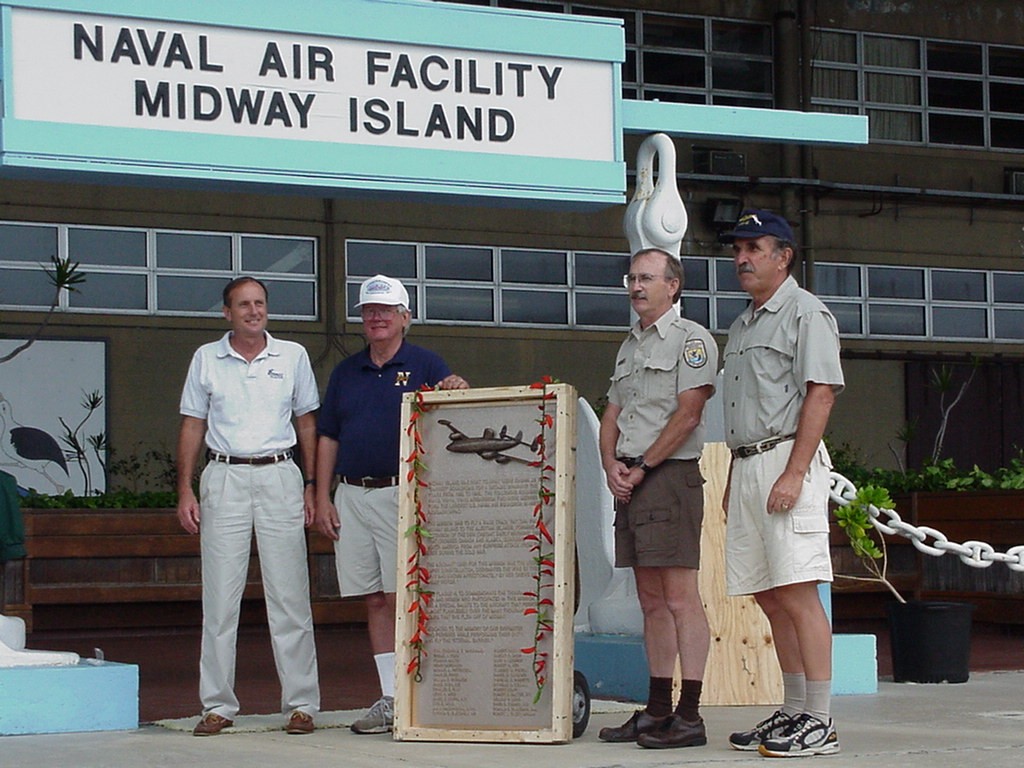
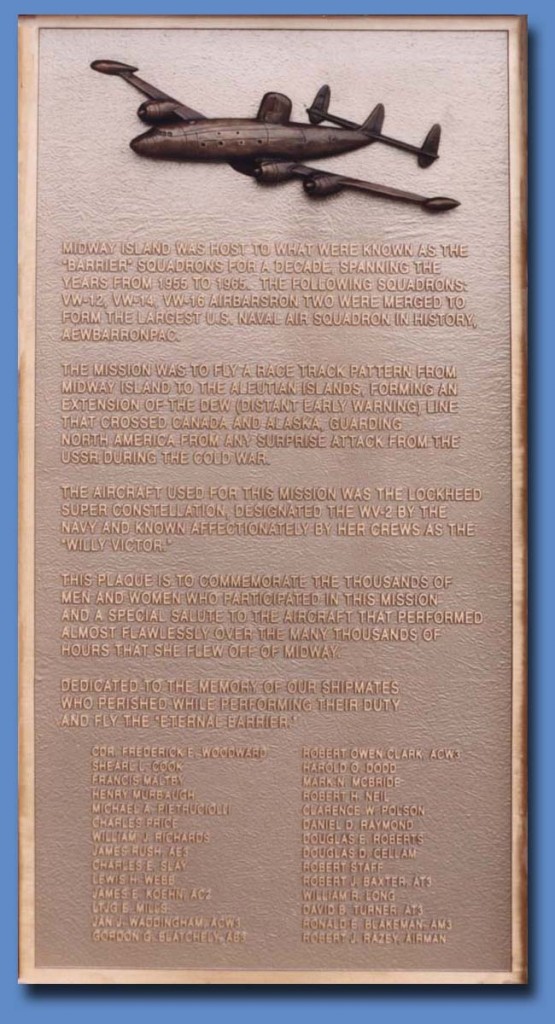
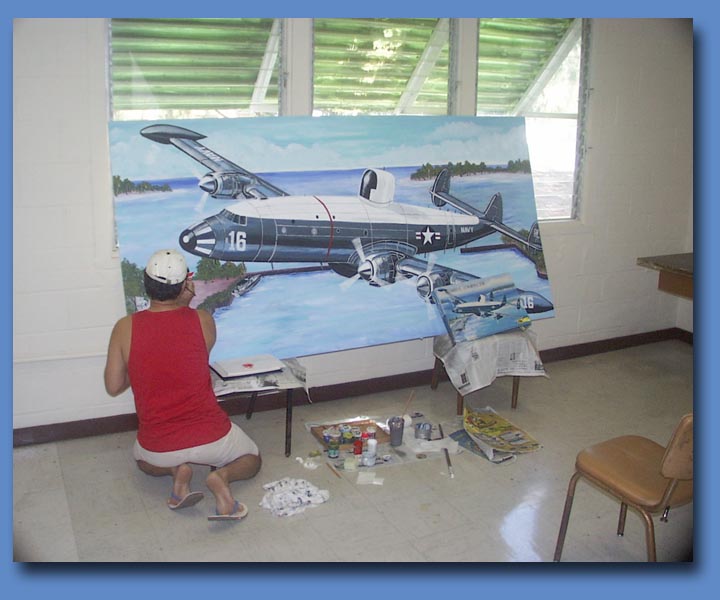
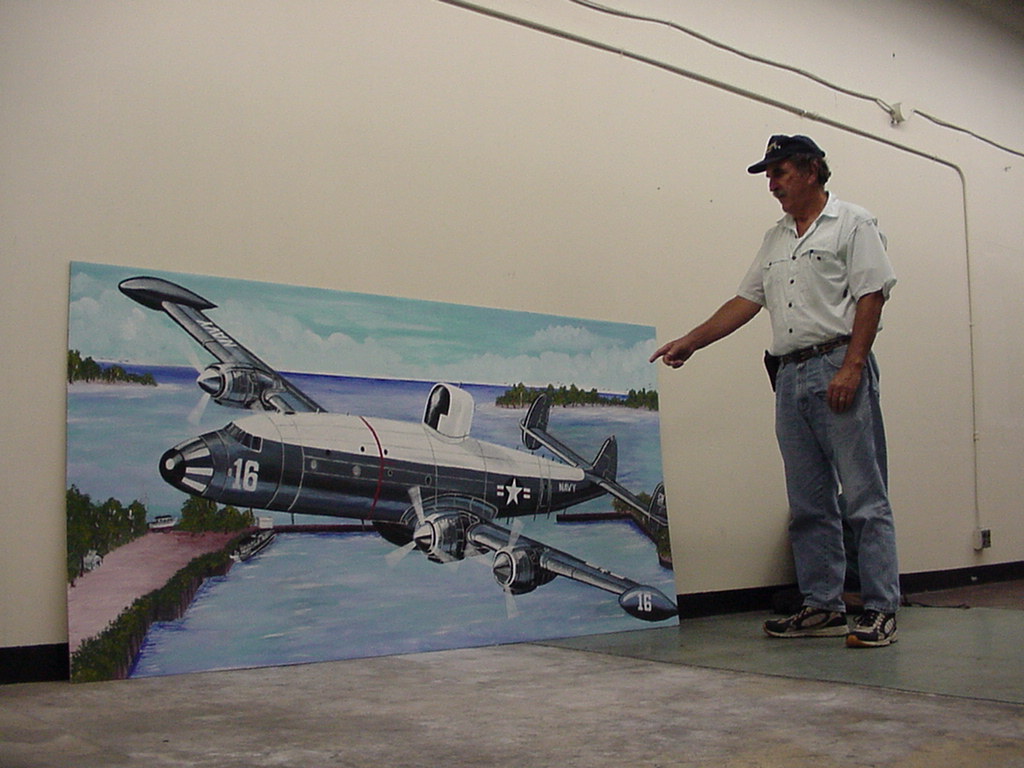
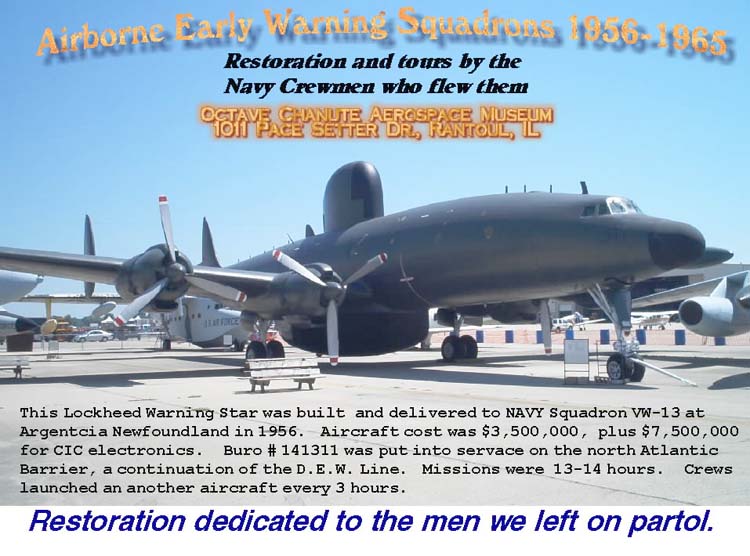
My dad was naval aviator Arthur E Thompson and was part of AEWBARRONPAC stationed at Barbers Point in the early 60’s. I think he was a Lieutenant Commander at the time. He would talk about the gooney birds all over Midway. We lived in the Navy housing at Eva Beach. As a 10 or 11 year old, I had no idea about the gravity of the work these servicemen were doing. Very grateful for their service. Dad passed away in 1992. Thank you for this website.
It was stationed on Midway 62-63. I was the Logs and Records yeoman (ADR3) for the WV log books. Was transferred to AEW at Barbers Point and continued in Logs and Records until the squadron disbanded and went to VU1 and then to AMD as a recip mechanic until the end of my enlistment.
Gordon C Wright AT2 62 – 64 early out in may as AEWBARRONPAC flew away to Arizona. No photos or movie left. Just found this trying to tell my 14 yo daughter abought flying and electronics repair in the pre computer days. Just take the cover off and let things cool down. greetings to Kigoma, Jim lyons,{dont ever call her ‘his old lady} Darcy Kent, Bill Mckenny if still around
I am so excited! My dad (Paul Johnson) is in the picture of the first crew to fly the barrier as we knew it. My dad died in 1960 at Barber’s Point and I was only 12. I don’t know much about his Navy service. He was a pilot. I just came across this and learned so much. Thank you for this!
My name is Ron Dupont and I was assigned to Airbarsron 2 from 1957 to 1960. Flew aboard many aircraft during that time. Fond memories now but not as much back then. Only good thing about aircrew, no duty. Look to hear from anyone who was there during that time. Ron
I arrived at the transient barracks at Barbers Point about New Years eve 1959 as a member of Airbarsron 2. Left AEWBARRONPAC January 1963 as ACW2 and about 3,000 hours of flight time. I was on the crew that flew the 10,000 barrier on 10 Checkpool. There was a write-up in The Lockheed corporate news. The president of Lockheed was at the ceremony and gave everyone a pen set.
My crew C-28 was chosen to fly to Christmas Island to confirm the clearance of the drop zones for atomic bomb tests Operation Dominick. We found quite a few vessels missed by the reserve VP squadron based out of NAS Alameda. We also cleard the drop zone at Johnson Island for the only firing of a Polaris submarine missile with a live nuclear warhead.
I developed high grade cancer from radiation exposure 50 years later. Early detection saved me. I just hope my crew mates were as lucky as me.
Ron, My Dad, William J Richards was aboard the flight that was lost in the Pacific December 23, 1957 that hit the with a firedrill that went awry. Do you know anything. Im his last daughter thst is alive.
Just discovered you website. Wish I’d found it much sooner. My father, (Army) CW4 (Ret) Bernard Jacquez, was assigned there in 1959 or ’60 as an E3 ADRAN, but passed away a week ago, on 5 May 2023. While he was dying of liver cancer, I discovered a treasured plastic tote from Staples that he had maybe 50 Kodak camera rolls. Papa was also Midway Island Operations in the mid-1990s, before transferring back to California. Only recently was I able to have some of the footage developed, but he didn’t live long enough to see any of it, when he was Navy enlisted: aerial shots of Midway, working in the hangar, test flights onboard a Constellation, playing around with shipmates, and even filming the Mexican Navy’s dress visit to Hawai’i. (Perhaps when Hawai’i gained statehood in 1959?) There are more rolls that I need to develop, and would love to upload them to YouTube at some point. If I had found this sooner, I could have asked Papa about the crash, or if he knew your names.
Sorry for loss of your Sad Juanita!
I would love to see your Dad’s photos! Photomyne is a good app for copying prints and slides to digital albums.
Please let me know whatever platform you use. Thanks! ray@jp4u2.com
I was a radar teck from 62-64, I have a Hydrogen- thyrotron tube from the APS 20 radar power supply.. It is beautiful. I am 82,. My kids will pitch it. Does anyone know of a museum or place that wants it.
Was assigned powerplants middet 1962-63. Debris of Checkpool 16 plus engine/s were left at the end of the runway, a grim reminder to returning air crews.
Long lonely year of isolated duty….3 days work 1 day off routine.
Remember one WV lost an engine past V1, overboosted the other 3 engines…flew off in ground effect….dumped fuel, an returned for 4 engine changes.
Sorry for loss of your Dad Juanita!
I would love to see your Dad’s photos! Photomyne is a good app for copying prints and slides to digital albums.
Please let me know whatever platform you use. Thanks! ray@jp4u2.com
You cannot imagine how much we appreciated you guy’s when we were flying at 50 north latitude in the middle of the night and the seas were running 70 foot waves below us!
PS: On a few occasions when back at Barbers Point on R&R I was assigned to help Dooley update the engine log books.
Any of you remember my dad Bob Hill? (Robert G Hill Jr.) He was a WV2 Radarman. We lived on Midway in the early 60’s. Mom and Dad were both avid bowlers and Mom did a lot of work with ceramics while we lived there.
I was an ACW 2 at Midway 59-63. Based at Barbers Point, deployed to Midway. Do you know what your Dad’s rating was? AT for example? I don’t know of any CIC ACW’s who were permanently stationed at Midway with family. We moved back and forth as a crew and had training as a crew while back at Barbers Point. My family lived in base housing at Barbers Point.
I was there the day a Willie Victor landed with gear up. I was assigned to The PW Transportation Division.
That was an amazing day! The starboard landing gear oleo had broken inside the strut so the break was not visible to a walk around inspection. When the plane took off the wheels and broken oleo just dropped out, made a perfect bank shot off he runway bouncing up and shearing off the starboard side elevator and vertical stabilizer flush with the fuselage! And the Connie still flew! After orbiting Midway for a while it was decided a safe landing could be made on the bottom search fiberglass radome. Any crew member who wanted to use one of the parachutes to bail out was given that option as I understood at the time. Everyone decided to stay with the plane.
After dumping fuel the very skilled plane commander brought it in, all 140,000 pounds, and set her down gently. The props dug into the runway almost immediately.
Everyone walked away without injury which is the classical definition of a good landing!
The plane sat on the flight line for several months as a new strut, stabilizer and rudder were installed and perhaps the power plants too. I don’t think the radome was replaced, but perhaps it was.
The noble aircraft was flown back to Lockheed at Keehi Lagoon and then on to the boneyard at Litchfield Park Arizona was my understanding.
My Dad, CDR Charles Farrell, flew the Barrier from ’59 to January ’62. He had many stories about flying the Willie Victor over those years. I was 12-15 years old at the time and have many great memories of living in Pearl City Highlands and the brand new Navy housing at Eva Beach at the entrance to Pearl Harbor. The WV was and still remains a beautiful aircraft. I wonder how many of the flight crews got excessive radiation exposure during those long barrier flights?
I was an electronics flight crew chief 1961-1962 and appreciate your pictures.
I spent a total of 33mos. in AIRBARSRON2-AEWBARRONPAC 1959-1962
and lament that I didn’t take pictures on Midway Island during deployments.
On 20 January 1960, I was a radar operator on a crew from VW-14 that flew the
ill fated Checkpoint 16, from Barbers Point, Hawaii to Midway Island. Two days
later the plane crashed on landing, coming in from a barrier flight with another
crew on board.
Then on 01 February 1960, four Naval aircraft squadrons (VW-12, VW-14, VW-16 and AIRBARSRON- 2) the maintenance squadron, were merged into the largest aircraft squadron in the Navy which was AEWBARRONPAC. Needless to say I was a very happy ACW-3,and a “Plank Qwner”.
I am also a Plank Owner! Check Crew 1960, AE2!
I flew the barrier as part of VW-12 / AEWBARRONPAC from 1957-1961 as a ACW2 with the first part as a CIC crewmember and later as a 2nd Navigator aboard almost all of the “Checkpools”. I was a witness to the 16 Checkpool crash and had flown that same aircraft a couple of barriers earlier. The barriers were 2,840NM and took 13-16 hours depending upon the winds. It was an experience I’ll never forget.
I was stationed on Midway Island for a year, 1960-1961 and was a journalist third class (JO3). I was attached to AFRTS radio station KMTH as a disc jockey/station programer. I was on the when I was handed an announcement that a Willie Victor had just crashed. I lost some beer drinking buddies that day, a day that lives etched in my mind
Thanks to everyone who has participated in publishing information and photos of Midway Island while being deployed. As a young 3rd Class PO/Sea Bee I was sent to Midway back in 1961 for a 2 year deployment with the Public Works Department where I was assigned duties of Purchasing for the SB Battalions, & then took over the Base Carpenter & Auto Paint Shop’s until sometime in 1962 when I was sent to San Fransisco Navel Base for my discharge to attend Collage. But while on Midway my Sea Bee Rating & experience with P/Works proved to be my apprenticeship for my future to become a 50 year Certified Class A General Contractor, with my own Company. I hope some time I might hear for some of the Midway Crew I worked with, to reminisce a bit. Marc